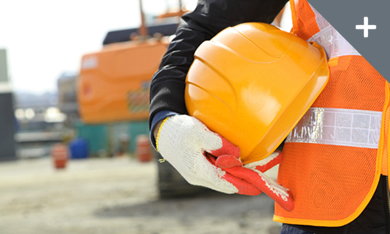Which VAT scheme to use?
Newsletter issue – October 2022
Most businesses know that once the tax turnover for a business exceeds the VAT registration threshold (currently £85,000 a year), or it is expected to do so within the next 30 days, VAT registration is compulsory. Some businesses are not required to register (e.g. those offering education and training and some medical treatments) but if registration is required there are several schemes to choose from - which you choose will depend on the type of business and how the business is run.
The different schemes
Apart from the standard accounting method, there are the Cash accounting, Annual accounting, and Flat rate schemes. In addition, various VAT margin schemes exist whereby instead of paying VAT based on an item's selling price, the tax is based on the difference between the amount paid for an item and the selling price.
Standard VAT Accounting
Under standard VAT accounting, when to assess for VAT is based on the dates on the invoice and receipts, rather than payment dates.
Deregistration is possible if taxable supplies in the next 12 months are estimated to be £83,000 or less unless the business ceases or supplies are suspended for more than 30 days. A business can remain voluntarily registered so long as a taxable trade continues. Notification of deregistration is required within 30 days of ceasing to make taxable supplies, effective from the date of notification or later as agreed with HMRC.
Importantly, many owners of deregistered businesses are unaware that they must account for output tax on any assets the business has at deregistration, where the VAT due on the value exceeds £1,000; this means that an asset of £5,000 or more triggers a 'deemed supply'. The most likely trigger is the ownership of a building but can also include ownership of commercial vehicles, equipment, and stock on hand. VAT due on deregistration is a deemed supply of the VAT registered business 'selling' the assets to the continuing non-VAT registered entity. A claim for VAT incurred after deregistration relating to supplies made before, can be made as can bad debt relief.
Cash accounting scheme
Under standard VAT accounting cash-flow problems can occur should customers take time to pay which is where the Cash Accounting Scheme can prove beneficial. Under this scheme VAT is not included on a return until the customer has paid or the supplier has been paid. A business must leave the scheme at the end of any VAT period where the taxable sales for the previous twelve months have exceeded £1.35 million excluding VAT. Such a business will revert to using the standard accounting method unless full deregistration is made. The final return on leaving the scheme must account for output tax on closing debtors, claiming input tax on any closing creditors - that way the system aligns with the standard method of accounting. Where the change could produce a potential cash-flow problem, VAT on debtors and creditors can be paid over the next two quarters (6 months), as and when payments are made and received. HMRC is not required to be notified when the business leaves the scheme but any outstanding VAT must be paid.
Some businesses may temporarily exceed the threshold and if this happens they can remain within the scheme if it is believed that taxable sales in the next twelve months will be less than the joining threshold, i.e. £1.35 million excluding VAT - again, HMRC is not required to be notified.
Annual Accounting scheme
Under this scheme VAT payments on account are made throughout the accounting year, based on the net liability on the previous year's return. The annual return and balancing payment are due within two months of the end of the accounting year. Designed to be flexible and simple, it can also be combined with the flat rate and VAT cash accounting schemes if desired. The exit requirements for this scheme are the same as for the cash accounting scheme.
Flat rate scheme
This scheme is only available to businesses with a turnover of £150,000 or less, which will rule out many VAT-registered businesses. Under the scheme the business charges the customer the standard VAT rate but pays a fixed percentage of the gross sales in a period, depending on the business activity, ranging from 4% for food retailers to 16.5% for limited costs businesses. This scheme is most beneficial for those businesses that do not have many VATable expenses to claim.
A business can opt to leave the scheme at any time but must leave if gross sales including VAT have exceeded £230,000 on the anniversary date of joining the scheme or there are reasonable grounds to believe that income for the next 30 days will exceed that amount (capital asset sales excluded). However, if total sales including VAT are expected to be less than £191,500 in the next twelve months, application can be made to remain in the scheme.
 Cookies are small text files that are stored on your computer when you visit a website. They are mainly used as a way of improving the website functionalities or to provide more advanced statistical data.
Cookies are small text files that are stored on your computer when you visit a website. They are mainly used as a way of improving the website functionalities or to provide more advanced statistical data.














Posted on Mon, 3 Aug 2015
Posted on Mon, 3 Aug 2015
Posted on Wed, 29 Jul 2015
 TWITTER
TWITTER
Tweets by @OWSupportCuts to National Insurance contributions and the abolition of so-called ‘non-dom’ tax breaks were among the headline announcements in the...
You‘ve probably digested the main news by now from the Spring Budget. Now comes the next stage: the Spring Finance Bill. The bill was published...
You may have seen somewhat of a furore breaking out in the media towards the end of the month, as HMRC announced its tax helpline would shut down for...
We‘ve seen plenty of speculation before the last two Budgets that Inheritance Tax would see major reforms. Yet nothing materialised. And the...
Funerals that are broadcast online for well-wishers unable to attend in person are becoming exempt from VAT. During the COVID pandemic, streaming...
Q: I’m a property owner, and I’m considering renting one of my houses out for people to use for vacations. What are the tax rules I need...
New tax year begins; new tax codes take effect....